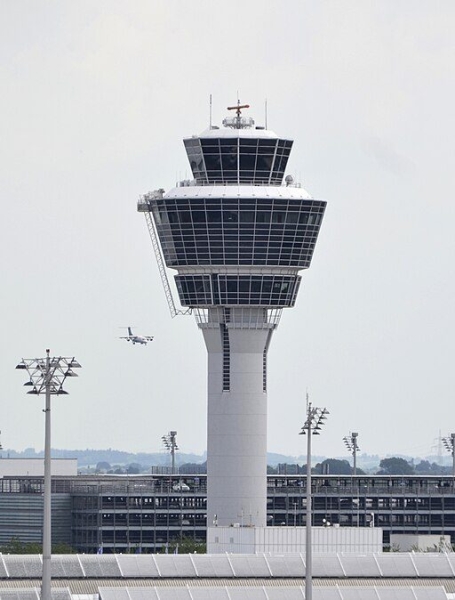Munich Airport Drone Disruption Raises Alarms over Civil Aviation Security
High Contrast, CC BY 3.0 DE
Late on the evening of October 2, Munich International Airport halted flight operations after multiple unconfirmed drone sightings in its airspace. Authorities restricted departures early, then suspended all takeoffs and landings until 5:00 a.m. local time the next morning. The disruption caused 17 outbound flights to be canceled, 15 incoming flights to be diverted (to cities such as Stuttgart, Nuremberg, Vienna, and Frankfurt), and impacted nearly 3,000 passengers, many of whom spent the night in terminals or hotels.
Despite the scale of the stoppage, no drone was recovered or positively identified. Witnesses included police, airport staff, and bystanders. A federal police helicopter was deployed to search, but no further confirmations of drone type, number, or origin were made.
Authorities’ Response & Legal Changes Under Consideration
Airspace control & operations
Germany’s air navigation service (DFS) phased in restrictions before full suspension. The airport reopened once authorities judged safety conditions restored. The airport issued blankets, drinks, snacks, and sleeping arrangements for stranded passengers.
Law enforcement / investigation
Federal police conducted aerial searches. State and federal authorities have opened inquiries into the incident, though as of now no culprit has been named.
In Bavaria, political leadership has responded swiftly. Bavarian Prime Minister Markus Söder publicly urged the power to shoot down rogue drones “immediately,” rather than waiting for bureaucratic approval.
Earlier this year, the German federal government had already drafted amendments to the Aviation Security Act to allow the military to shoot down drones in extreme circumstances.
Broader Context: Europe’s Drone Incursions & the “Drone Wall” Proposal
This incident is not isolated. Over recent weeks and months, multiple EU nations (Denmark, Norway, Belgium, Poland, Romania, Estonia, Lithuania) have reported mysterious drone overflights, some disrupting airport operations or flying near sensitive military sites.
Much commentary speculates these incursions are part of hybrid pressure campaigns. Some reports suggest Russian involvement in Europe’s broader pattern of drone incidents, though no public evidence currently links Moscow to Munich specifically, and Moscow has denied involvement.
At the policy level, EU defense ministers have endorsed the concept of a “drone wall” along the bloc’s eastern flank: a network of sensors, detection systems, and counter-UAS technologies.
Risks to the Commercial Drone Industry
A guest post published October 2 on DRONELIFE — “Drone Sightings: Reporting Risks or Overreacting?” — explored Finland’s approach and the risks of overreaction.
In Finland, authorities generally permit drone flight except near airports or military zones. Public tools like Flyk maps and FinTraffic services allow operators to check no-fly zones and voluntarily file flight plans. Still, Finnish police report dozens of drone sighting calls monthly, most tied to hobbyists or permitted operators.
Finland’s Defense Minister Antti Hakkanen has emphasized resilience, stating “no drones can rattle us,” while pushing EU/NATO coordination—including support for the drone wall project.
If Germany enacts shoot-down authority, commercial operators may face heightened liability risks, insurance costs, or operational restrictions, which could ripple across Europe’s drone services sector.
What This Means for the Drone Ecosystem
-
Civil aviation is vulnerable: Even unconfirmed sightings can shut down a major hub for hours.
-
Detection & attribution are difficult: Without hard evidence, it’s almost impossible to identify perpetrators.
-
Policy momentum is growing: Germany’s shoot-down proposal and the EU’s drone wall show rapid escalation toward counter-UAS measures.
-
Industry impact is likely: Overzealous reporting or aggressive new laws could chill responsible drone use, raising costs and risks for operators and businesses.

